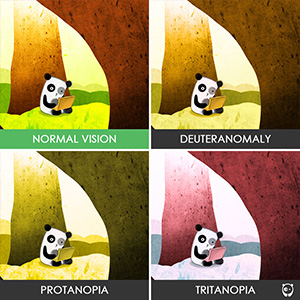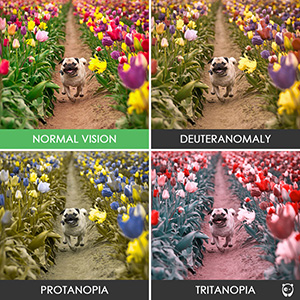Humans may not be unique in our ability to see colour, but we are unique in the depth of colour we see and the overall visual acuity we are afforded. Colour vision is an interesting thing, but perhaps what is most interesting about it is how different species see the world compared to us.
Seeing Into the Unknown
Many insects and animals have the ability to see into the infrared or UV spectrums of light, providing them with a field of view unlike anything humans know or can truly appreciate. We can emulate this effect somewhat using software and specialized cameras, but even then, we’re only inferring what we believe this type of vision looks like.
It is well known that plants have vibrant patterns, markings, and colours in the UV/infrared spectrums to attract insects to them.
How do People See Colour?
Humans have two main types of light-sensitive cells in our eyes, called rod and cone cells.
Rod Cells
This type of photoreceptor cell is the main cell responsible for night vision. They are extremely light sensitive and able to provide vision in low-light settings, though they do not provide much value for colour vision (this is why we do not see many colours in dark settings).
The human eye has approximately 90 million rod cells within it.
Cone Cells
This type of photoreceptor cell is what provides us with colour vision. As you can imagine, they function best in bright light (when we see the most colours). There are approximately 5 million cone cells in each eye.
The Most Common Types of Colour Vision Deficiency
Approximately 12% of men and 1% of women have some form of color blindness.
There are many different types of colour blindness, though red-green colorblindness is the most common. There are four types of red-green colorblindness:
- Protanomaly – In this version, red, orange, and yellow colours appear less vivid and washed out. Protanomaly does not affect daily life.
- Protanopia – In this version, the affected person doesn’t see red at all (it appears black). Colours that have red elements look vastly different compared to a normal eye.
- Deuteranomaly – The most common form (affecting about 5% of men), greens and yellows appear more red than usual. In addition, it is difficult to tell violet from blue.
- Deuteranopia – In this version, the affected person does not see green at all. As you can imagine, colour looks very different compared to a normal eye!
Learn More About Color Blindness























